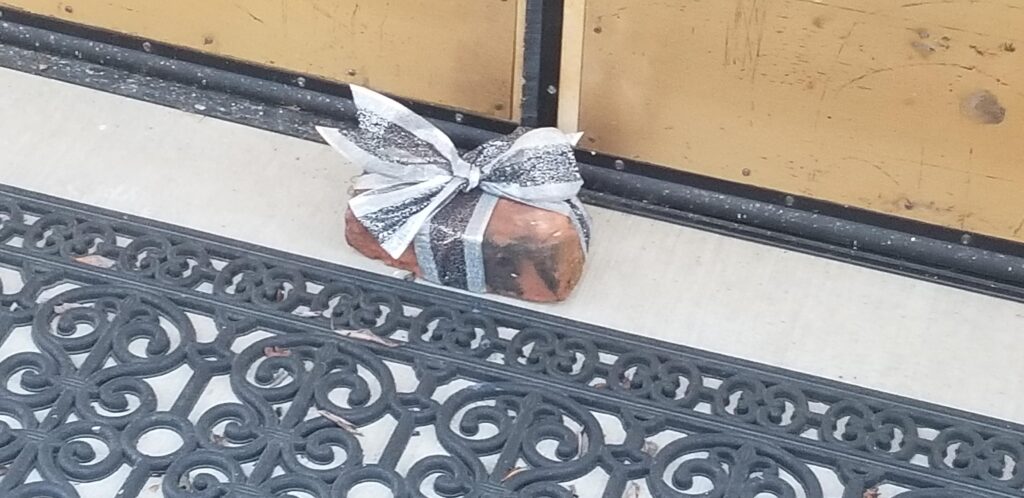This post is about milk paint. I am currently in the tail stages of constructing my first piece of furniture, an antique inspired tool chest to hold my small collection and keep it organized and free from dust. The layout is largely based off of the anarchist's tool chest by Christopher Schwartz at lost art press, and is available free to download, only I am doing the plywood version which is available as a YouTube series as well. You can catch it here:
https://youtube.com/playlist?list=PLOUEnRdBNW4PsmAENQb-Y9UzrHnXzUjqc
Anyway I have been moving forward with a mix of hand tools and power tools depending on my mood or needs at the time, and being a beginning woodworker have left my share of tool marks, plane tracks etc, and of course a very healthy amount of wood filler. Any gap in joinery caused from being slightly out of square, or tearout when drilling countersink holes etc, I patched with filler and moved on, knowing the chest would be painted and nobody would be any the wiser.
Here is where milk paint enters the picture, in particular casein paint. One of the things I wanted to try was to finish the chest using an undercoat of red milk paint covered with black milk paint then finished with wax. Unlike modern plastic paints, these paints are less durable and wear through with time, the rationale being that as the chest is used the most frequently touched areas show the black wearing away with the red revealed underneath. This is a popular finishing technique particularly for antique inspired chairs.
I ordered casein powder and picked up borax from the local hardware store and ordered oxide pigments online. They are not hard to find. I made the binder, mixing the 5 parts casein to 2 parts borax in 18 parts water and heating to 140 and holding overnight. This is added to 3-5 parts of pigment and diluted with water for use.
You can see the grain of the wood really clearly in the OP pic. It shows the paint on a test piece where half is covered with a heavier first coat as there was more pigment in the mix, then a lighter second coat where the paint was watered down to stretch it for a second coat. Using this material I can get a range of different colors, depending on the application. Now the interesting part. This paint shows EVERYTHING. It absorbs into the grain and reveals the underlying texture, and highlights every imperfection. The tool chest looks like absolute shit. And I love it.
Here's a photo of some plane marks left behind and accentuated by the milk paint:

The end result is something that has unequivocally been created by human hands with attention and care (if not skill lol). You simply won't get this finish from a factory.
And my absolute favorite part? It's completely nontoxic. I painted the relatively large tool chest in my enclosed garage, in the winter, no fumes to deal with. When I spilled a bit on my pants I scrubbed it out with soap and water. When I am finished, I can pour the whole lot down the sink without worrying about introducing VOCs into my water supply! It's milk and borax!
I am from this point forward no longer using commercial paints for any but the most durability critical applications. No more waiting for household hazardous waste day, no more painting with a respirator with the garage doors wide open in 30 degree weather. Paint doesn't have to be toxic waste!
Next I will build a step stool for my little one and plan on finishing with milk based oxide paint. I can rest easy knowing that if she chews on it she will be safe. For that project I will also be investigating the use of homemade hide glue as an alternative to modern, plastic glues. It can be made with gelatin and salt. I've even heard of people using gummy bears.
This is one of the cooler things I've done and I wanted to share it with y'all. It really makes me reflect on what we've sacrificed in the name of "convenience" and "durability"
I've made a couple of stick chairs and finished with Real Milk Paint(tm), and really enjoyed both the process and the result. My chairs give a really nice red glow through the black where they get a little wear, but where there's more extensive wear it cuts straight to the wood beneath. I'd like to see more red, and apparently you can achieve that by applying shellac between the red and black coats. Share more of your chest when you're done please!
Shellac is intriguing for sure, I have never messed with it but it's on my list. I'll post the finished product when it's done
There's a guy that replicates antique finishes who treats the wood with nitric acid before painting it to give it that orange "aged" look, of course you could also just give it time :)
Very cool! I didn't know that you could make paint from milk
In fascist Italy they tried making cloth out of milk. It wasn't very successful:
https://www.atlasobscura.com/articles/lanital-milk-dress-qmilch
I had to scroll a bit to get to the punchline. Emphasis mine.
Despite the initial honeymoon period, milk-based fabrics soon fell out of favor around the world. Despite press hype about its luxury, lanital was much weaker than wool, and it broke easily. Threads often came out when ironed. But most damning was the putrid odor these fabrics sometimes gave off: “when damp, [lanital and aralac] smelled like sour milk, causing many consumer complaints.”
Another thing that's been really cool with these paints is seeing how they dry and recognizing a lot of the inspiration for the colors used to paint historic homes. Ochre and Viridian have always been head scratchers to me, but make a ton of sense now that they were included as part of my oxide pigments starter kit!
This would be a lot cooler if you didn't slather it/fill in its gaps with industrial scale cow torture juices.
They're allowed to comment their disapproval whether or not there is a CW. No need to be hostile about it.
It would be really cool to find non-animal substitutes for these things that are accessible and affordable. Do you know of any?
Accessibility and affordability are relative, but there are plant based paints for everything from watercolor and acrylic fine art paints to wood varnish and wall emulsions
I'm a vegan, not a paint expert, so idk how any of the options my quick search turned up actually perform, but I also have no idea how cow paint performs relative to other industrial mixtures that OP is trying to avoid
Hell yes. We need more woodworking comrades. I plan on building his Anarchist's Tool chest someday (although somehow I am banned from /c/Anarchism??? Checkmate mods
 ). I built Rex Kruger's English joiners bench last year and slapped an old vise on it, then covered it with various crap related to the deck I was building. A few more home improvement projects and I'll finally have time to make some furniture!
). I built Rex Kruger's English joiners bench last year and slapped an old vise on it, then covered it with various crap related to the deck I was building. A few more home improvement projects and I'll finally have time to make some furniture!Nice, I have a Nicholson too, though I built it with the naked woodworker pattern save for dovetailed stretchers. I wasn't wild about all the screws but the thing is rock solid
Where did you put the vise? I thought i was fine without one until I tried resawing, I did everything I possibly could to hold the board with the crochet/holdfasts and it was a trainwreck.
Interesting, never heard of the naked woodworker. Is that like the nude barber?
 Bad jokes aside, I just found an under mounting vise, cut a hole in the back apron near the leg and went for it. It hardly fits and I had to screw on another 2-by board to anchor the thing to but it works alright. A vise is really necessary I've found.
Bad jokes aside, I just found an under mounting vise, cut a hole in the back apron near the leg and went for it. It hardly fits and I had to screw on another 2-by board to anchor the thing to but it works alright. A vise is really necessary I've found.Lol
Naked Woodworker is a 2 vid series by Mike Siemsen released through lost art press, the basic premise is how do you start woodworking if you have nothing (hence naked). Very much in line with nd likely inspired the woodworking for humans series Rex put out. I love his stuff as well.
He shows you how to shop for a starter tool kit at a swap meet, cleaning up and restoring the tools for work including saw sharpening, then uses those tools to build saw horses and a workbench. The Nicholson he builds is basically identical to rex's but Rex uses better joinery. I am lucky to have a miter and circular saw so made much faster and more precise work of it, but still had to plane home depot 2×12s by hand 😂
Back apron is a good spot for a vise I think, I prefer the pegs/ holdfasts / crochet combo for edge planing and am content to chop dovetails right on the bench top, and the crochet with a holdfast is strong enough for dovetail sawing because there's little lateral / rotational force on the piece. It's a lot more efficient in my view. Even watching Paul Sellers he wastes so much time getting stuff in and out of the vise.
With resawing that all goes out the window, so the back apron makes sense so it's out of the way but there when you need it.
I hadn't even considered that speed might be a factor for crochet/holdfast setup vs vise... Full disclosure I haven't even drilled out the holdfast holes on the front of my bench yet!
You totally should, I've been using my front apron holes more than my bench top ones
I just hammered them out with a corded drill and a diablo bit, the brace thing feels a little TOO old timey even for me
the maker of this toolchest is really more of a libertarian with retvrn characteristics
He's a bit of a weird guy for sure, typical American with no coherent political ideology







